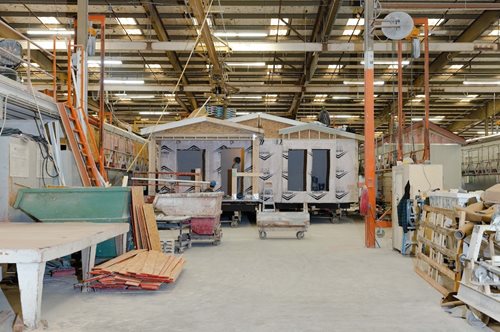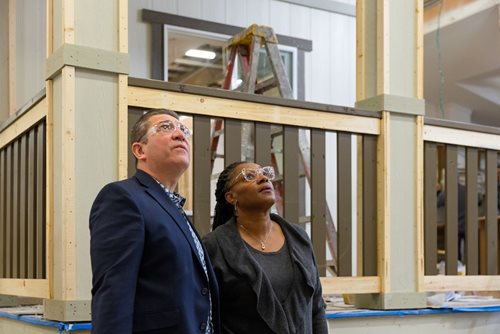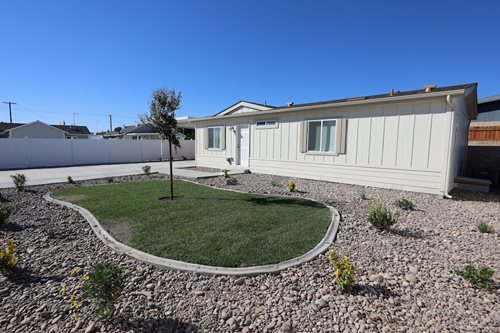Like much of California, the Inland Empire is facing a spiraling affordability crisis exacerbated by a shortage of affordable homes. While the region is often perceived as a haven from white-hot coastal housing markets, this is relative, as rising housing prices are still pushing homeownership out of reach for many, particularly low- and moderate-income (LMI) consumers. According to the California Association of Realtors (CAR), the median sales price in the Inland Empire was $540,000 in November 2022, a 42.5% increase from the November 2019 median sales price of $379,000.
Although California has aggressively tried to address issues around affordable housing — more than doubling its affordable housing production in the last three years — shortfalls continue. With 2.93 Californians for every one affordable occupied housing unit (according to the Public Policy Institute of California), housing production goals are still failing to make up for decades of undersupplied affordable homes. Consumers of color are also disproportionately impacted by these trends, particularly when it comes to homeownership. From a story published by the U.S. Department of the Treasury, recent statistics found that nationally, Hispanic and Black homeownership rates are 48% and 45% respectively, compared to 75% for whites. In order to increase the availability of affordable housing, innovative solutions are imperative.
 With the help of a grant from NeighborWorks America and Clayton Homes, Neighborhood Partnership Housing Services, Inc. (NPHS) is building and testing a scalable social enterprise based on the lessons learned from our initial experience with factory-built housing. The grant is being leveraged with an additional $8 million in construction and consumer lending capital to launch this social enterprise, Homes by NPHS LLC.
With the help of a grant from NeighborWorks America and Clayton Homes, Neighborhood Partnership Housing Services, Inc. (NPHS) is building and testing a scalable social enterprise based on the lessons learned from our initial experience with factory-built housing. The grant is being leveraged with an additional $8 million in construction and consumer lending capital to launch this social enterprise, Homes by NPHS LLC.
"NPHS is working on so many levels to improve neighborhoods alongside the people who live there,"says Sarah Kackar, NeighborWorks’ director of Rural Initiatives. "As the organization pursues affordable housing and equitable homeownership, it exemplifies the practice of comprehensive community development"— a roadmap to strengthening the whole community.
Clemente Mojica, president and CEO at NPHS, adds, "This model not only leverages the potential of factory-built housing technology to increase the supply of affordable homeownership and mitigate the impacts of climate change on low-income homeowners, but also takes advantage of NPHS’ vertically integrated approach to reach underserved markets and address the systemic obstacles that have historically impeded households of color from achieving and sustaining homeownership. The model combines innovation with community development strategies for communities of color and offers equitable access to homeownership opportunities."
NPHS recently broke ground on its Gateway Factory-Built Housing Demonstration Project in the City of San Bernardino. The site includes a single-family factory-built home in the front and a factory-built accessory dwelling unit (ADU) in the back. The project combines factory-built technology, NPHS’ community land trust, renewable energy and climate resiliency to produce innovative affordable housing opportunities. Extreme weather events, like record-breaking heatwaves, long-lasting rainstorms, and stronger Santa Ana winds, amplify the deterioration of the Inland Empire’s existing housing and increase the need for climate-resilient affordable units. NPHS’ innovative approach is aimed squarely at addressing these systemic issues, which the nonprofit shared at NeighborWorks' symposium, "Climate Resilience: Fostering Wealth, Health and Sustainability in Communities of Color."
"By using a combined approach — factory-built technology to create affordable homes and accessory dwelling units, and then placing them within their community land trust — NPHS is addressing pressing issues of long-term affordability,"Kackar says. "They’re finding real solutions to challenges faced by communities of color with an approach that pairs innovation with resilience. And they’re offering communities the promise of vibrant, sustainable neighborhoods."
 The Gateway Factory-Built Housing Demonstration Project is part of a broader innovation strategy to revitalize neighborhoods in the City of San Bernardino by using factory-built technology to transform scattered vacant and blighted lots into vibrant residential communities. This new development includes a factory-built single-family home in the front with a factory-built ADU in the back. Both units are ENERGY STAR rated and will include solar panel systems, be Electric Vehicle (EV)- ready and placed on NPHS’ community land trust to maintain their affordability.
The Gateway Factory-Built Housing Demonstration Project is part of a broader innovation strategy to revitalize neighborhoods in the City of San Bernardino by using factory-built technology to transform scattered vacant and blighted lots into vibrant residential communities. This new development includes a factory-built single-family home in the front with a factory-built ADU in the back. Both units are ENERGY STAR rated and will include solar panel systems, be Electric Vehicle (EV)- ready and placed on NPHS’ community land trust to maintain their affordability.
"NPHS' approach in the Gateway Factory-Built Housing Demonstration project is a great example of the long-term thinking necessary for successful homeownership projects on community land trust land," says Jenee Gaynor, NeighborWorks' director of Shared Equity Housing. "Community land trusts bring land under community control to serve community needs in perpetuity, using a shared equity housing model to preserve housing affordability over time. In this project, NPHS is creating community assets that will truly last because they are combining the community land trust model with a focus on climate resilience and energy efficiency."

A major component of Homes by NPHS’ strategy is its commitment to increasing the number of developers of color who can access factory-built housing. As a minority-led developer itself, NPHS also sees the potential to create joint ventures with a variety of developers who might not otherwise serve LMI communities of color.

